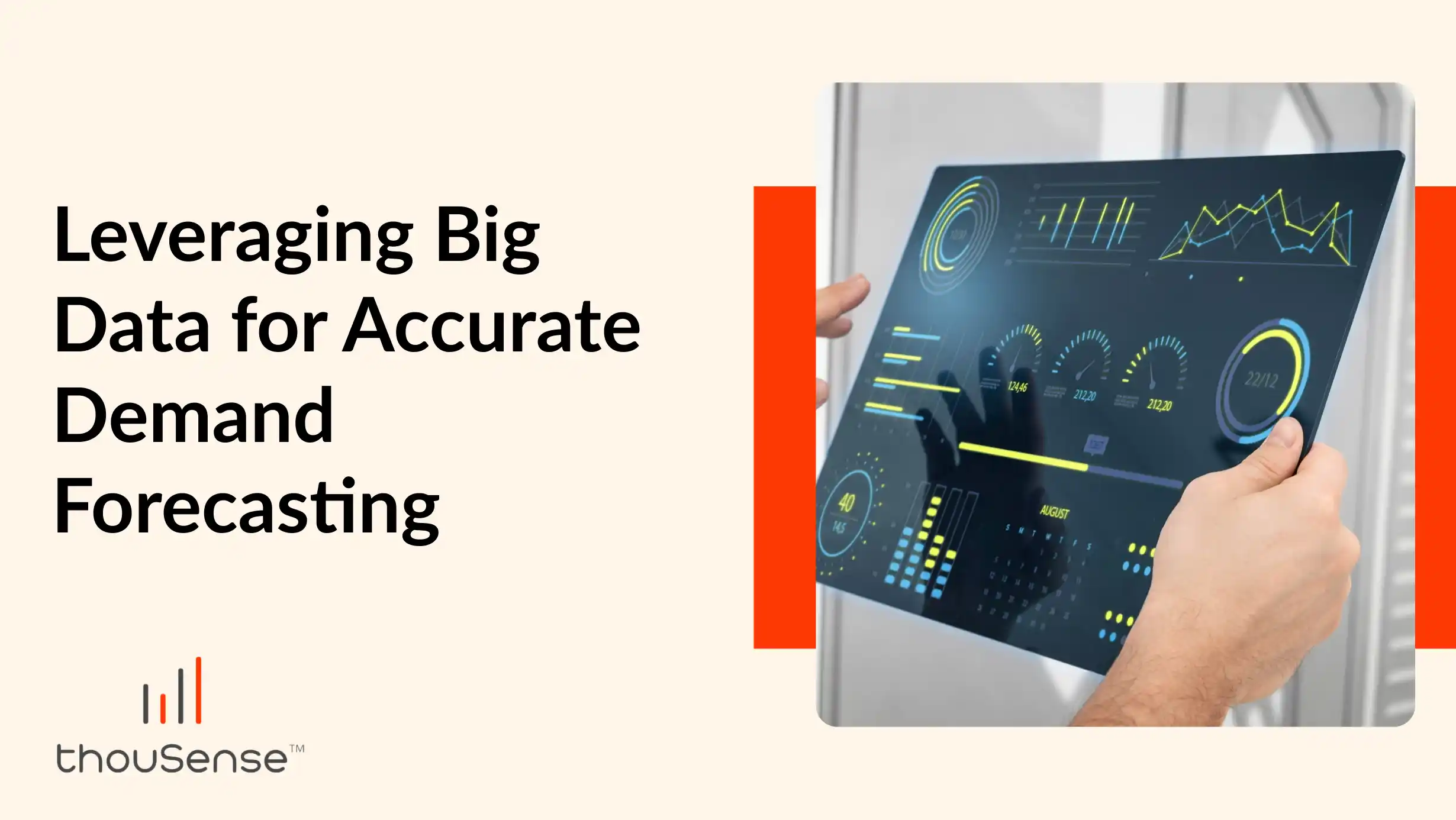Leveraging Big Data for Accurate Demand Forecasting| thouSense

Introduction
In today's data-driven world, businesses are constantly seeking ways to improve their decision-making processes and gain a competitive edge. One area where leveraging big data has proven to be particularly valuable is demand forecasting. By harnessing the power of big data, organizations can enhance the accuracy of their demand forecasts, leading to better inventory management, optimized production, and improved customer satisfaction.
Understanding Demand Forecasting
What is Demand Forecasting?
The technique of predicting future demand for a good or service is known as demand forecasting. It involves analyzing historical data, market trends, and other relevant factors to predict future customer demand. Accurate demand forecasting enables businesses to make informed decisions regarding production, inventory, and supply chain management.
Importance of Accurate Forecasts
Accurate demand forecasts are crucial for businesses operating in dynamic markets. By having a clear understanding of customer demand, organizations can optimize their inventory levels, avoid stock outs or overstocking, reduce costs, and improve overall operational efficiency. Additionally, accurate forecasts enable businesses to respond proactively to changes in demand, gaining a competitive advantage.
Leveraging Big Data for Forecasting
Role of Big Data in Forecasting
Big data has revolutionized the field of demand forecasting. By leveraging large volumes of data from various sources, organizations can gain valuable insights into customer behavior, market trends, and external factors that impact demand. This data-driven approach allows businesses to create more accurate and reliable demand forecasts.
Types of Big Data Sources
When it comes to demand forecasting, organizations can tap into various sources of big data. These sources include customer data, such as purchase history and demographic information, sales data, social media data, web analytics, and data from external sources like weather reports or economic indicators. By integrating and analyzing these diverse data sources, businesses can gain a comprehensive view of demand drivers.
Benefits of Using Big Data
Leveraging big data in demand forecasting offers several benefits. Firstly, it enables businesses to identify patterns and trends that might be missed with traditional forecasting methods. By analyzing customer preferences, behaviors, and sentiments expressed on social media, organizations can gain valuable insights into shifting demand patterns.
Furthermore, big data allows businesses to conduct demand sensing, which involves capturing real-time data to identify sudden changes in demand. This agile approach helps organizations respond quickly to market fluctuations, optimize inventory, and improve customer satisfaction.
Additionally, big data analytics techniques, such as machine learning and artificial intelligence, can be applied to forecast demand more accurately. These advanced analytics methods can identify complex relationships between variables and uncover hidden patterns, leading to improved forecast accuracy.
Challenges in Leveraging Big Data
Data Quality and Integration
One of the key challenges in leveraging big data for demand forecasting is ensuring data quality. With large volumes of data from various sources, ensuring accuracy, consistency, and reliability can be a complex task. Data cleansing and integration processes need to be in place to address data quality issues and enable seamless analysis.
Data Privacy and Security
As organizations collect and analyze vast amounts of customer data, data privacy and security become critical concerns. Safeguarding sensitive customer information and complying with relevant regulations is essential. Implementing robust security measures and adhering to privacy best practices are vital when leveraging big data for demand forecasting.
Data Analysis and Interpretation
Analyzing and interpreting big data can be a challenging endeavor. Organizations need to employ skilled data analysts and data scientists who can extract meaningful insights from complex datasets. Furthermore, effective data visualization techniques can facilitate the understanding and communication of forecasted demand patterns.
Best Practices for Accurate Forecasts
Data Collection and Preparation
To ensure accurate demand forecasts, organizations must focus on collecting high-quality data. This involves identifying relevant data sources, cleansing and integrating data and establishing data governance practices. By starting with clean and reliable data, the accuracy of demand forecasts can be significantly improved.
Advanced Analytics Techniques
Applying advanced analytics techniques, such as machine learning algorithms, can enhance the accuracy of demand forecasting. These techniques can identify non-linear relationships, seasonal patterns, and other complex demand drivers. By leveraging these advanced methods, organizations can gain a competitive edge in their forecasting capabilities.
Continuous Monitoring and Updates
Demand forecasting is an ongoing endeavor that needs frequent review and updating. By regularly evaluating forecast accuracy and comparing it with actual demand, organizations can fine-tune their forecasting models and adapt to changing market conditions. Continuous monitoring ensures that demand forecasts remain relevant and accurate over time.
Conclusion
Leveraging big data for accurate demand forecasting is a game-changer for businesses seeking to optimize their operations and meet customer demands effectively. By integrating diverse data sources, applying advanced analytics techniques, and following best practices, organizations can improve forecast accuracy, reduce costs, and gain a competitive advantage. Embracing the power of big data is crucial for staying ahead in today's dynamic business landscape.